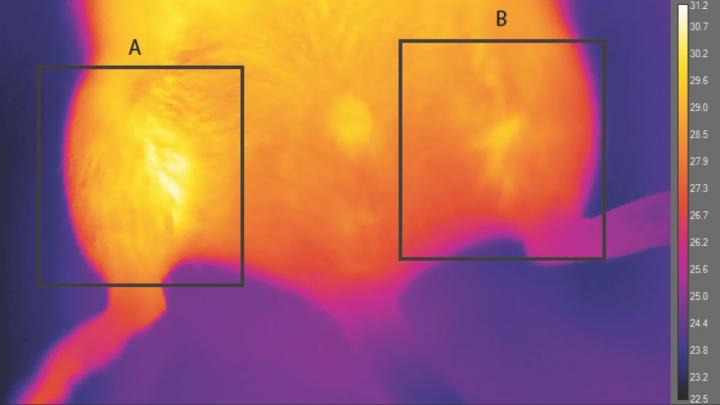Implanting brown fat, a calorie-burning tissue, helps control weight gain, blood sugar and blood triglyceride levels in mice.

American researchers have successfully recreated human brown fat in the laboratory. In their work published in Diabetes, they reveal that its implantation in mice prevented weight gain and lowered blood glucose levels.
In humans, there are two types of fat cells: brown adipocytes and white ones. While white adipose tissue stores lipids in the form of triglycerides, brown fat burns calories to maintain body temperature at 37 ° C. It is this combustion capacity that interested scientists at the University of Berkeley in California.
Stem cell implantation
To synthesize this tissue in the laboratory, they used stem cells normally present in white fat, which they placed in a flexible gel capable of directing their transformation into brown adipocytes. The originality of their method is to have implanted in mice this gel containing cells still undifferentiated. To track their development, the researchers used genetically engineered mice that produced a fluorescent protein.

This is a thermograph of an implanted mouse. Zone A represents the region where the cluster of stem cells was injected. Compared to zone B, the control region, it can be observed that zone A is significantly warmer. Credit: Kevin Tharp and Andreas Stahl.
One day after implantation, the researchers observed that at room temperature, the body temperature of the implanted mice increased by one degree, unlike the control mice. A proportional effect since the more the number of cells, the more the temperature rises, according to the study.
Controlled weight gain
On the other hand, when both groups of mice were fed a diet high in fat, the implanted mice gained half the weight of the control mice. Their blood glucose and triglyceride levels were also lower than that of non-implanted mice.
“It’s a growing area of research right now,” said Andreas Stahl, author of this study. We are the first to have implanted a group of artificial brown adipocytes in mice and to show that it has the expected effects on body temperature and its benefits on the metabolism ”.
The authors indicate that this technique could lead to new approaches to combat obesity, diabetes and other metabolic disorders.
.















